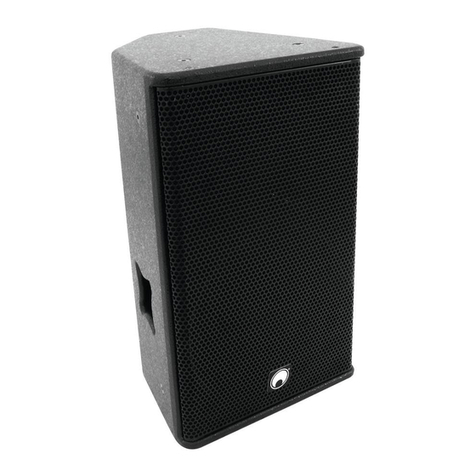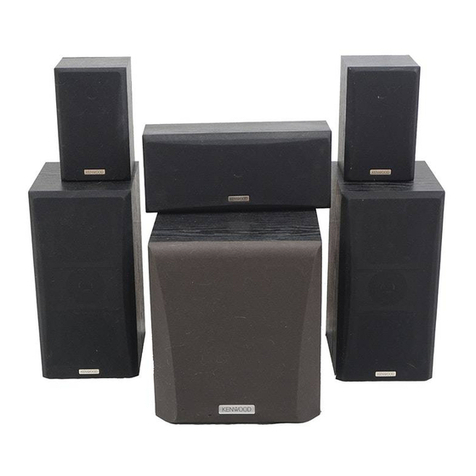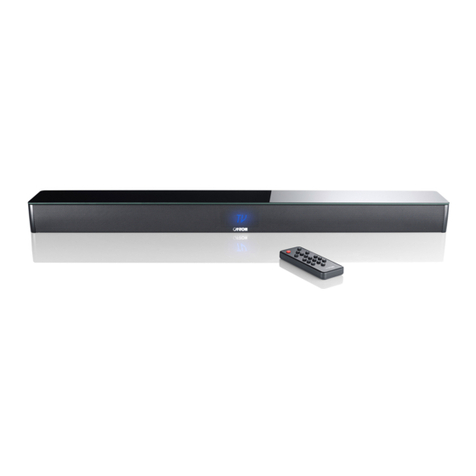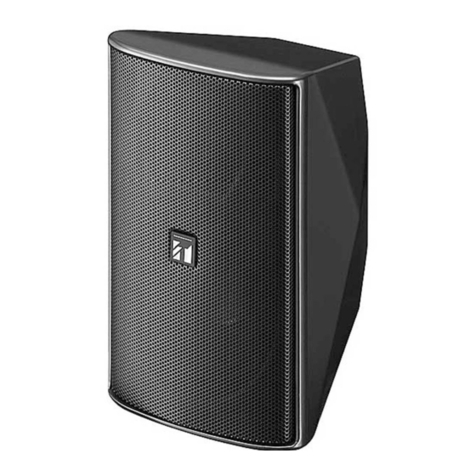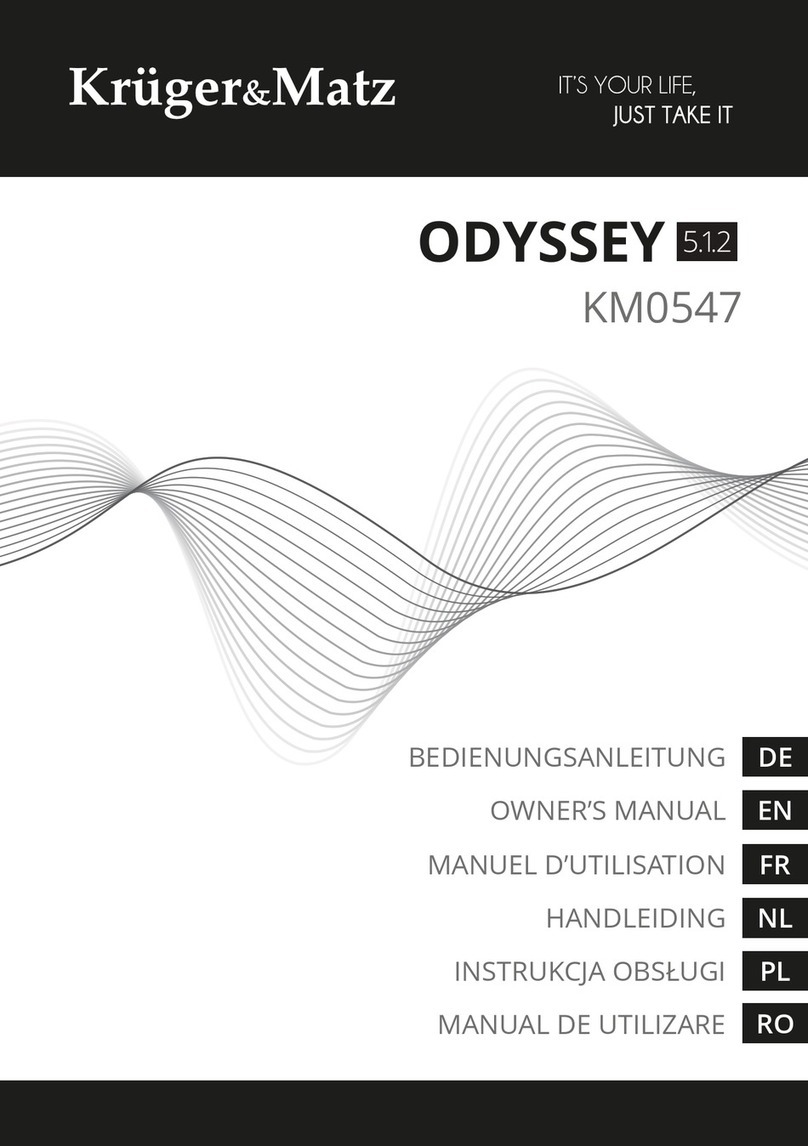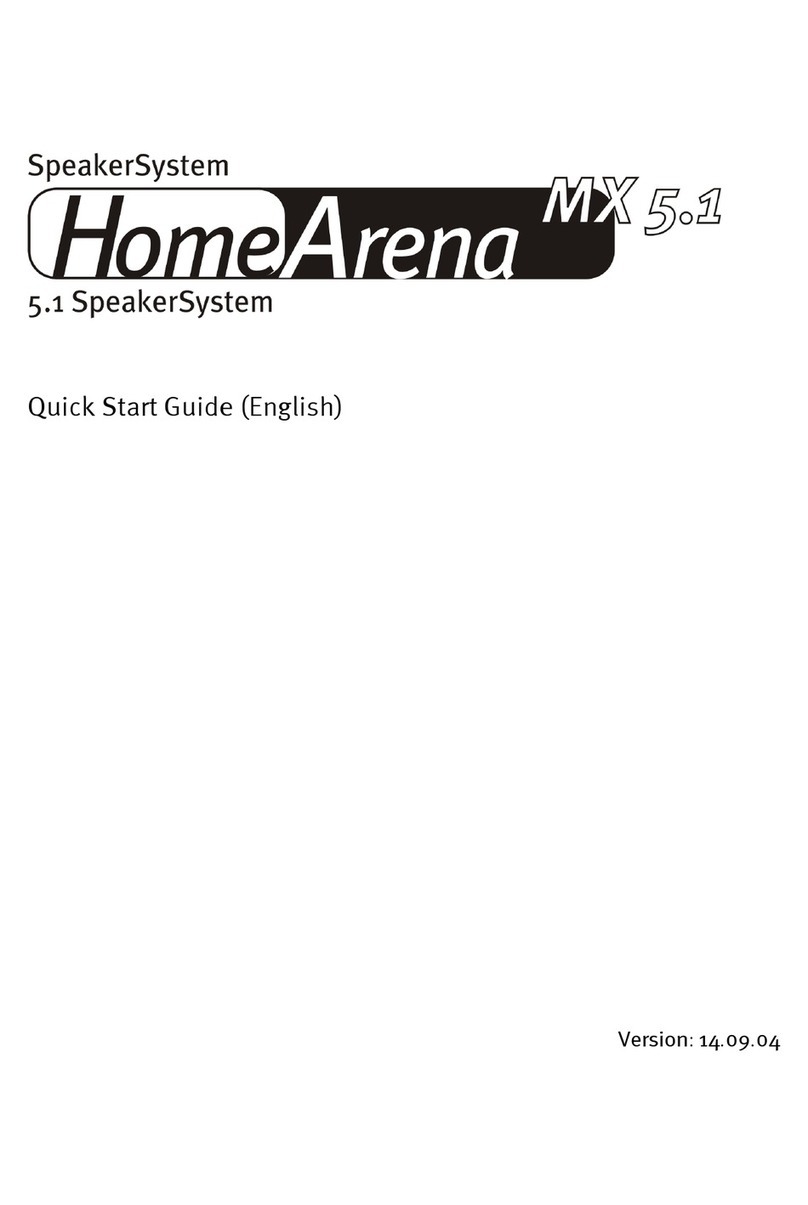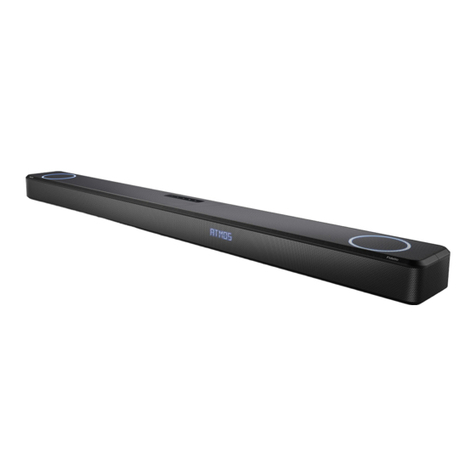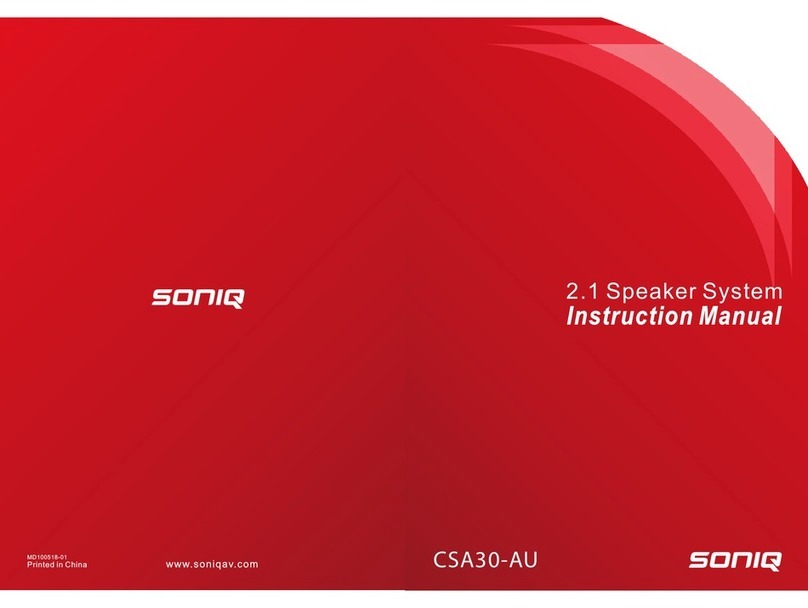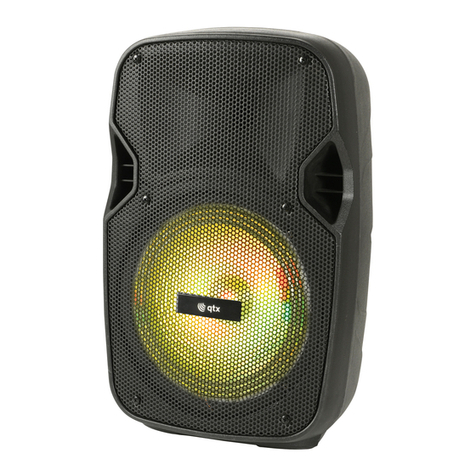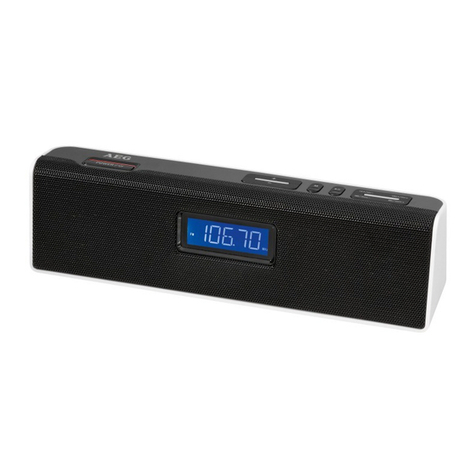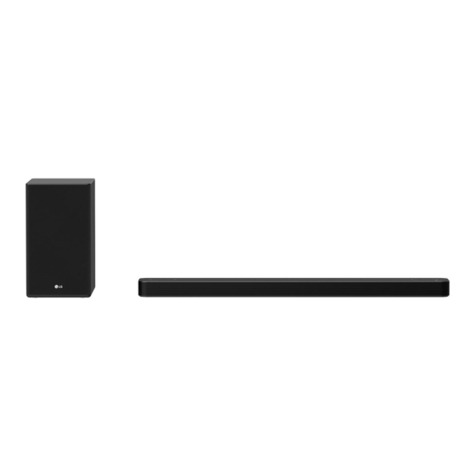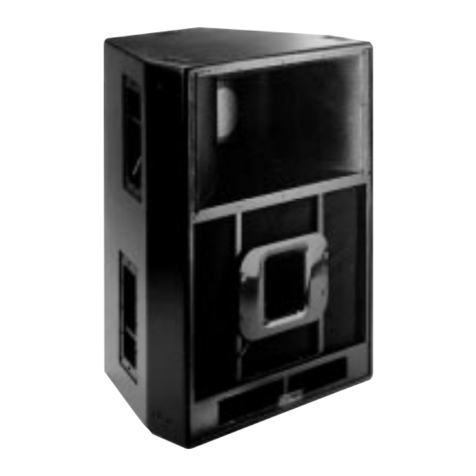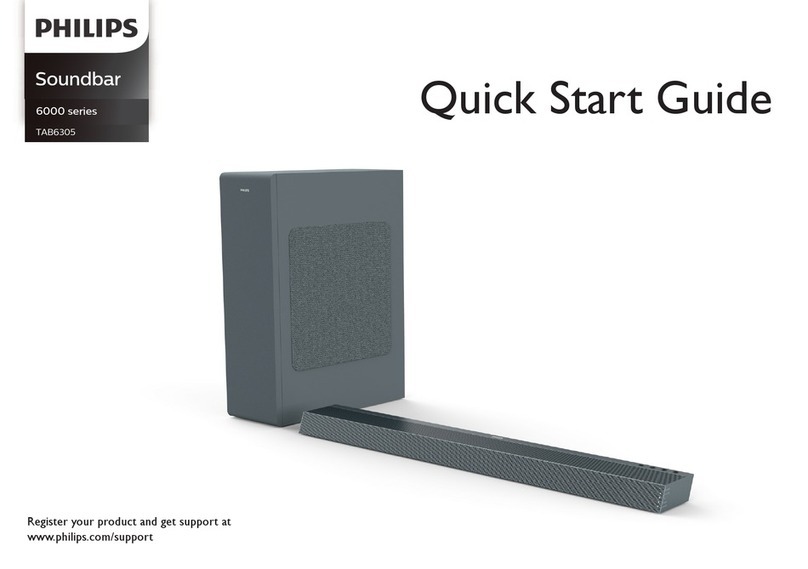Bosch DVAS User manual

Quick Start Guide
EN Digital Video Array
DVAS

DVAS | Instruction Manual | Important Safeguards EN |2
Bosch Security Systems | 07 January 2004
Important Safeguards
1. Read, Follow, and Retain Instructions - All safety
and operating instructions should be read and
followed before operating the unit. Retain instructions
for future reference.
2. Heed Warnings – Adhere to all warnings on the unit
and in the operating instructions.
3. Attachments - Attachments not recommended by the
product manufacturer should not be used, as they
may cause hazards.
4. Installation Cautions - Do not place this unit on an
unstable stand, tripod, bracket, or mount. The unit
may fall, causing serious injury to a person and
serious damage to the unit. Use only manufacturer-
recommended accessories, or those sold with the
product. Mount the unit per the manufacturer's
instructions. Appliance and cart combination should
be moved with care. Quick stops, excessive force, or
uneven surfaces may cause the appliance and cart
combination to overturn.
5. Cleaning - Unplug the unit from the outlet before
cleaning. Follow any instructions provided with the
unit. Generally, using a damp cloth for cleaning is
sufficient. Do not use liquid cleaners or aerosol
cleaners.
6. Servicing - Do not attempt to service this unit
yourself. Opening or removing covers may expose
you to dangerous voltage or other hazards. Refer all
servicing to qualified service personnel.
7. Damage Requiring Service - Unplug the unit from
the main AC power source and refer servicing to
qualified service personnel under the following
conditions:
•When the power supply cord or plug is damaged.
•If liquid has been spilled or an object has fallen
into the unit.
•If the unit has been exposed to water and/or
inclement weather (rain, snow, etc.).
•If the unit does not operate normally, when
following the operating instructions. Adjust only
those controls specified in the operating
instructions. Improper adjustment of other controls
may result in damage, and require extensive work
by a qualified technician to restore the unit to
normal operation.
•If the unit has been dropped or the cabinet
damaged.
•If the unit exhibits a distinct change in
performance, this indicates that service is needed.
8. Replacement Parts - When replacement parts are
required, the service technician should use
replacement parts specified by the manufacturer, or
that have the same characteristics as the original part.
Unauthorized substitutions may result in fire,
electrical shock, or other hazards.
9. Safety Check - Upon completion of servicing or
repairs to the unit, ask the service technician to
perform safety checks to ensure proper operating
condition.
10. Power Sources - Operate the unit only from the type
of power source indicated on the label. If unsure of
the type of power supply to use, contact your dealer
or local power company.
•For units intended to operate from battery power,
refer to the operating instructions.
•For units intended to operate with External Power
Supplies, use only the recommended approved
power supplies.
•For units intended to operate with a limited power
source, this power source must comply with
EN60950. Substitutions may damage the unit or
cause fire or shock.
•For units intended to operate at 24 VAC, normal
input voltage is 24 VAC. Voltage applied to the
unit's power input should not exceed 30 VAC.
User-supplied wiring, from the 24 VAC supply to
unit, must be in compliance with electrical codes
(Class 2 power levels). Do not ground the 24 VAC
supply at the terminals or at the unit's power
supply terminals.
11. Coax Grounding - If an outside cable system is
connected to the unit, ensure that the cable system is
grounded. U.S.A. models only--Section 810 of the
National Electrical Code, ANSI/NFPA No. 70,
provides information regarding proper grounding of
the mount and supporting structure, grounding of the
coax to a discharge unit, size of grounding
conductors, location of discharge unit, connection to
grounding electrodes, and requirements for the
grounding electrode.
12. Grounding or Polarization - This unit may be
equipped with a polarized alternating current line
plug (a plug with one blade wider than the other).
This safety feature allows the plug to fit into the
power outlet in only one way. If unable to insert the
plug fully into the outlet, try reversing the plug. If the
plug still fails to fit, contact an electrician to arrange
replacement of the obsolete outlet. Do not defeat the
safety purpose of the polarized plug.
Alternately, this unit may be equipped with a
3-wire grounding plug (a plug with a third pin, for
grounding). This safety feature allows the plug to fit
into a grounding power outlet only. If unable to insert
the plug into the outlet, contact an electrician to
arrange replacement of the obsolete outlet. Do not
defeat the safety purpose of the grounding plug.
13. Lightning - For added protection during a lightning
storm, or when this unit is left unattended and unused
for long periods of time, unplug the unit from the
wall outlet and disconnect the cable system. This will
prevent damage to the unit due to lightning and
power line surges.

DVAS | Instruction Manual | Safety Precautions EN |3
Bosch Security Systems | 07 January 2004
For Indoor Product
1. Water and Moisture - Do not use this unit near
water - for example, in a wet basement, in an
unprotected outdoor installation, or in any area
classified as a wet location.
2. Object and Liquid Entry - Never push objects of
any kind into this unit through openings, as they
may touch dangerous voltage points or short out
parts that could result in a fire or electrical shock.
Never spill liquid of any kind on the unit.
3. Power Cord and Power Cord Protection - For
units intended to operate with 230 VAC, 50 Hz,
the input and output power cord must comply
with the latest versions of IEC Publication 227 or
IEC Publication 245.
Power supply cords should be routed so they are
not likely to be walked on or pinched. Pay
particular attention to location of cords and plugs,
convenience receptacles, and the point of exit
from the appliance.
4. Overloading - Do not overload outlets and
extension cords; this can result in a risk of fire or
electrical shock.
For Outdoor Product
Power Lines - An outdoor system should not be
located in the vicinity of overhead power lines,
electric lights, or power circuits, or where it may
contact such power lines or circuits. When
installing an outdoor system, extreme care should
be taken to keep from touching power lines or
circuits, as this contact might be fatal. U.S.A.
models only - refer to the National Electrical
Code Article 820 regarding installation of CATV
systems.
For Rack-Mount Product
1. Ventilation - This unit should not be placed in
a built-in installation or rack, unless proper
ventilation is provided, or the manufacturer’s
instructions have been adhered to. The
equipment must not exceed its maximum
operating temperature requirements.
2. Mechanical Loading - Mounting of the
equipment in a rack shall be such that a
hazardous condition is not achieved due to
uneven mechanical loading.
Safety Precautions
Attention: Installation should be performed by
qualified service personnel only in accordance
with the National Electrical Code or applicable
local codes.
Power Disconnect. Units with or without ON-
OFF switches have power supplied to the unit
whenever the power cord is inserted into the
power source; however, the unit is operational
only when the ON-OFF switch is in the ON
position. The power cord is the main power
disconnect for all units.
CAUTION: TO REDUCE THE RISK OF
ELECTRIC SHOCK, DO NOT REMOVE COVER
(OR BACK). NO USER SERVICEABLE PARTS
INSIDE. REFER SERVICING TO QUALIFIED
SERVICE PERSONNEL.
The lightning flash with an arrowhead
symbol, within an equilateral triangle, is
intended to alert the user to the
presence of uninsulated “dangerous
voltage” within the product’s enclosure
that may be of sufficient magnitude to
constitute a risk of electric shock to
persons.
The exclamation point within an
equilateral triangle is intended to alert
the user to the presence of important
operating and maintenance (servicing)
instructions in the literature
accompanying the appliance.
WARN ING:
Electrostatic-sensitive device. Use
proper CMOS/MOSFET handling
precautions to avoid electrostatic
discharge.
NOTE: Grounded wrist straps must be worn and proper ESD
safety precautions observed when handling the electrostatic-
sensitive printed circuit boards.
CAUTION: Lithium Battery
Danger of explosion if battery is incorrectly replaced.
Replace only with the same or equivalent type
recommended by the manufacturer. Dispose of used
batteries according to the battery manufacturer’s
instructions.
ATTENTION
OBSERVE PRECAUTIONS
FOR HANDLING
ELECTROSTATIC SENSITIVE
DEVICES

DVAS | Instruction Manual | FCC & ICES Information EN |4
Bosch Security Systems | 07 January 2004
Sécurité
Attention : L’installation doit être exclusivement
effectuée par un technicien spécialisé
conformément à la réglementation du code
national de l’électricité des États-Unis (NEC) ou à
la réglementation locale.
Coupure de l’alimentation. Les appareils avec ou
sans commutateur ON-OFF (marche-arrêt) sont
alimentés dès que le cordon d’alimentation est
branché à la source d’alimentation ; toutefois, les
appareils disposant d’un commutateur de
marche-arrêt ne fonctionnent que lorsque celui-ci
est sur la position ON (marche). Le cordon
d’alimentation est l’organe de coupure principal
de l’alimentation pour tous les appareils.
ATTENTION : POUR ÉVITER TOUT RISQUE
D’ÉLECTROCUTION, NE PAS OUVRIR LE
BOÎTIER. IL N’Y A PAS DE PIÈCES
REMPLAÇABLES À L’INTÉRIEUR. POUR
TOUTE INTERVENTION, S’ADRESSER À UN
RÉPARATEUR PROFESSIONNEL COMPÉTENT.
L’éclair fléché dans un triangle équilatéral
avertit l’utilisateur de la présence d’une
« tension dangereuse » non isolée à
l’intérieur de l’appareil et d’une valeur
suffisante pour constituer un risque
d’électrocution.
Le point d’exclamation contenu dans un
triangle équilatéral avertit l’utilisateur de
la présence, dans la documentation qui
accompagne l’appareil, d’importantes
consignes d’utilisation et de maintenance.
FCC & ICES Information
(U.S.A. and Canadian Models Only)
This device complies with Part 15 of the FCC Rules.
Operation is subject to the following conditions:
(1) This device may not cause harmful interference,
and
(2) This device must accept any interference received,
including interference that may cause undesired
operation.
NOTE: This equipment has been tested and found to
comply with the limits for a Class A digital device,
pursuant to Part 15 of the FCC Rules and ICES-003
of Industry Canada. These limits are designed to
provide reasonable protection against harmful
interference when the equipment is operated in a
commercial environment. This equipment generates,
uses, and radiates radio frequency energy and, if not
installed and used in accordance with the instruction
manual, may cause harmful interference to radio
communications. Operation of this equipment in a
residential area is likely to cause harmful interference,
in which case the user will be required to correct the
interference at his expense.
Intentional or unintentional modifications, not
expressly approved by the party responsible for
compliance, shall not be made. Any such
modifications could void the user's authority to
operate the equipment. If necessary, the user should
consult the dealer or an experienced radio/television
technician for corrective action. The user may find
the following booklet, prepared by the Federal
Communications Commission, helpful: How to
Identify and Resolve Radio-TV Interference Problems.
This booklet is available from the U.S. Government
Printing Office, Washington, DC 20402,
Stock No.004-000-00345-4.
WARNING: This is a Class A product. In a domestic
environment, this product may cause radio
interference in which case the user may be
required to take adequate measures.

DVAS | Instruction Manual | Safety Precautions EN |5
Bosch Security Systems | 07 January 2004
Sicherheitshinweise
Achtung: Die Installation darf nur von
qualifiziertem Wartungspersonal gemäß dem
National Electrical Code oder den gültigen
örtlichen Vorschriften durchgeführt werden.
Abtrennen der Spannungsversorgung: Die
Spannungsversorgung zu Geräten mit und ohne
Ein/Aus-Schalter ist hergestellt, wenn das
Netzkabel an eine Netzsteckdose angeschlossen
ist. Das Gerät ist jedoch nur betriebsbereit, wenn
der Ein/Aus-Schalter eingeschaltet ist. Bei allen
Geräten erfolgt das Abtrennen der
Spannungsversorgung über das Netzkabel.
VORSICHT: DAS GEHÄUSE ZUR
VERMEIDUNG VON ELEKTRISCHEN
SCHLÄGEN NICHT ÖFFNEN. DAS GERÄT
ENTHÄLT KEINE VOM BENUTZER ZU
WARTENDEN TEILE. REPARATUREN NUR
VON FACHPERSONAL AUSFÜHREN LASSEN.
Das Blitzsymbol im gleichseitigen Dreieck
soll den Benutzer auf nicht isolierte
“gefährliche Spannung” im Produkt
hinweisen, die ausreichend stark sein kann,
um die Gefahr von elektrischen Schlägen
für Menschen darzustellen.
Das Ausrufungszeichen im gleichseitigen
Dreieck soll den Benutzer auf wichtige
Bedienungs- und Wartungsanweisungen
in der Dokumentation hinweisen, die
dem Gerät beiliegt.
Precauciones de Seguridad
Atención: La instalación debe realizarla
personal cualificado en cumplimiento estricto
del código eléctrico nacional (en el caso de los
EE.UU.) o de los códigos locales aplicables.
Para Desconectar la Alimentación: Unidades
no equipadas con interruptores ON/OFF, son
alimentadas cuando el cable de alimentación es
conectado a la corriente eléctrica. Las unidades
equipadas con interruptores son alimentadas de
igual forma, pero adicionalmente requieren que
el interruptor esté posicionado en ON. El cable
de alimentación es el medio principal de
desconexión del equipo.
PRECAUCIÓN: PARA REDUCIR EL RIESGO
DE DESCARGA ELÉCTRICA, NO ABRA LAS
TAPAS. EN EL INTERIOR NO HAY NINGÚN
COMPONENTE REPARABLE POR EL
USUARIO. LAS REPARACIONES DEBE
REALIZARLAS PERSONAL CUALIFICADO.
El símbolo de flecha en forma de rayo
situado dentro de un triángulo equilátero
pretende alertar al usuario de la presencia
de “voltaje peligroso” sin aislamiento
dentro de la caja del producto, el cual
podría resultar de una magnitud
suficiente como para presentar un riesgo
de descarga eléctrica para las personas.
El punto de exclamación dentro de un
triángulo equilátero pretende alertar al
usuario de la existencia de instrucciones de
funcionamiento y mantenimiento
(reparación) en la documentación
suministrada con el aparato.

DVAS | Instruction Manual | Safety Precautions EN |6
Bosch Security Systems | 07 January 2004
Veiligheidsmaatregelen
Attentie: De installatie dient alleen te worden
uitgevoerd door gekwalificeerd servicepersoneel
en in overeenstemming met de plaatselijk
geldende installatievoorschriften.
Onderbreken van de spanning. Units met of
zonder AAN/UIT-schakelaar, staan onder
spanning zolang het netsnoer is verbonden met
de wandcontactdoos. De unit is echter alleen
bedrijfsklaar als de AAN/UIT-schakelaar in de
AAN-stand staat. Losnemen van het netsnoer is
voor alle units de belangrijkste manier om de
spanning te onderbreken.
GEVAAR: OPEN DEZE BEHUIZING NIET,
TENEINDE HET RISICO VAN ELEKTRISCHE
SCHOKKEN TE VOORKOMEN. BINNENIN
BEVINDEN ZICH GEEN DOOR DE
GEBRUIKER TE REPAREREN
ONDERDELEN. RAADPLEEG VOOR
REPARATIE GEKWALIFICEERD
SERVICEPERSONEEL.
Het symbool van een bliksem met pijlpunt
in een gelijkzijdige driehoek is bedoeld om
de gebruiker te waarschuwen voor de
aanwezigheid van een niet geïsoleerde
‘gevaarlijke spanning’ binnen in de
behuizing van het product, die voldoende
sterk kan zijn om personen het risico van
een elektrische schok te geven.
Het symbool van een uitroepteken in een
gelijkzijdige driehoek is bedoeld om de
gebruiker te waarschuwen voor de
aanwezigheid van belangrijke bedienings-
en onderhouds- (service-) instructies in de
documentatie die met het product zijn
meegeleverd.
Sicurezza
Precauzione: affidare l’installazione al solo
personale qualificato e nel rispetto del Codice
elettrico nazionale (USA) o dei codici locali
pertinenti.
Scollegamento dell’alimentazione. Gli apparecchi
con o senza commutatori ON-OFF ricevono
corrente tutte le volte che il cavo di
alimentazione è inserito nella presa di forza;
tuttavia, gli apparecchi muniti di commutatore
ON-OFF funzionano solo se quest’ultimo è in
posizione ON. Il cavo di alimentazione serve a
scollegare dalla corrente tutti gli apparecchi.
ATTENZIONE: PER RIDURRE IL PERICOLO
DI SCOSSA ELETTRICA, NON APRIRE LE
COPERTURE. L’INTERNO NON CONTIENE
COMPONENTI CHE L’UTENTE PUÒ
RIPARARE PERSONALMENTE. RIVOLGERSI
AL PERSONALE DI ASSISTENZA
QUALIFICATO PER QUALSIASI INTERVENTO
DI RIPARAZIONE.
Il simbolo triangolare di un fulmine con
la punta a freccia intende mettere in
allerta l’utente riguardo alla presenza di
tensioni pericolose non isolate all’interno
del guscio dell’unità, che potrebbero
essere di intensità sufficiente per
costituire pericolo di elettrocuzione.
Il punto esclamativo racchiuso in un
triangolo equilatero intende avvisare
l’utente in merito alla presenza di
importanti istruzioni operative e di
manutenzione nella documentazione di
accompagnamento all’unità.

Table of Contents
Important Safeguards . . . . . . . . . . . . . . . . . . . . . . . . . . . . . . . . . . . . . . . . . . . . . . . . . . . . . . . . . . . . . . . . . . . . .2
FCC & ICES Information . . . . . . . . . . . . . . . . . . . . . . . . . . . . . . . . . . . . . . . . . . . . . . . . . . . . . . . . . . . . . . . . . .4
1BEFORE YOU BEGIN . . . . . . . . . . . . . . . . . . . . . . . . . . . . . . . . . . . . . . . . . . . . . . . . . . . . . . . . . . . . . .8
1.1 Basic Installation Steps . . . . . . . . . . . . . . . . . . . . . . . . . . . . . . . . . . . . . . . . . . . . . . . . . . . . . . . . . . . . . . .8
1.2Setting Up the Network Connection . . . . . . . . . . . . . . . . . . . . . . . . . . . . . . . . . . . . . . . . . . . . . . . . . . . .8
1.3 Manually Setting the IP Address . . . . . . . . . . . . . . . . . . . . . . . . . . . . . . . . . . . . . . . . . . . . . . . . . . . . . . .9
1.4 Quick Configuration . . . . . . . . . . . . . . . . . . . . . . . . . . . . . . . . . . . . . . . . . . . . . . . . . . . . . . . . . . . . . . . .10
DVAS | Instruction Manual | Table of Contents EN |7
Bosch Security Systems | 07 January 2004

EN |8
Bosch Security Systems | 07 January 2004
DVAS | Instruction Manual | Unpacking
1BEFOREYOU BEGIN
Ensure the following:
•Installation environment is less than 40°C.
•The front drive bays and rear ventilation panels
are not obstructed.
•Main Power is sufficient to handle the load of
the system.
•Rack is properly grounded.
Tips for Rack Mounting:
•Remove the power supplies and hard disk
canisters to make the system lighter.
•Request assistance to lift the unit into the rack.
•Be careful not to trap fingers or items of
clothing.
•Ensure all fixtures are secure and all bolts and
screws are fully tightened.
1.1Basic Installation Steps
1. Attach the SCSI cable from the DVR to the
DVAS.
If only one DVR is connected to the DVAS, ensure
the cable is connected to channel 0. Refer to
SECTION 4.0 Product Overview.
2. Attach the power cord(s) to the Disk Array and
apply power to the unit.
If you hear an audible alarm, the DVAS unit does not
have a RAID group configured or no disks are present.
3. Wait 1 minute and apply power to the DVR
unit.
4. Configure the DVR for archiving (see DVR
instruction manual).
5. The DVAS unit is pre-configured depending
upon the model purchased.
For your convenience, the DVAS disk arrays are
shipped with drives pre-configured for RAID.
These configurations will satisfy most applications. If
these settings do not satisfy your application, or if you
wish to utilize additional features, then you will need to
set up the network connection and access the GUI. See
SECTION 1.2
Most common reasons to utilize the GUI interface:
•Add a Hot Spare.
•Add Drive(s) (if storage is expanded, the whole
RAID must be reconstructed).
•Change the allocation of storage (only
applicable if two DVRs are connected to a
single DVAS).
•Monitor the DVAS system.
•Use the email alert feature (warnings and error
message can be emailed to a specified address).
•Attaching two DVRs to a DVAS0416 or a
DVAS0816 unit (see Quick Configuration Page).
•Attaching only one DVR to a DVAS1416 (see
Quick Configuration page 10).
1.2Setting up the Network Connection
To use the web based GUI, perform the following steps:
1. Attach a network cable from the DVAS’s
Ethernet port to a network. You can also use
a simple cross-over cable from a PC to the
DVAS’s Ethernet port.
2. Access any computer on the network.
If you did not use a cross over cable and connected the
unit to a network, your network’s subnet mask may not
allow you to access this IP address without some
reconfiguration. To access the DVAS series disk array
simply access a shell, or DOS prompt on your host
computer, and enter the following command.
Windows: route add 10.11.12.13 <workstation IP number>
mask 255.255.255.255
Linux: /sbin/route add <workstation IP number>
10.11.12.13/32 gw
Solaris: route add 10.11.12.13 <workstation IP number>
mask 255.255.255.255
Model Number of DVR’s Connected Allocation of Storage
4 Hard Drive Model 1 DVR (Channel 0) 100% to Host Port 0
8 Hard Drive Model 1 DVR (Channel 0) 100% to Host Port 0
14 Hard Drive Model 2 DVR’s (Channel 0 + Channel 1) 50% to Host Port 0 50%, to Host Port 1

EN |9
Bosch Security Systems | 07 January 2004
DVAS | Instruction Manual | Installation
Where <Workstation IP number> is, replace this with
the IP address of the workstation you are using. Now
you will be able to access the DVAS series disk array’s
web interface using a standard browser.
1.3 Manually Setting the IP Address
Assuming you can now reach the DVAS via the network,
use a web browser program (Netscape or Internet
Explorer) then type the unit’s IP address in the URL and
press "GO" (the default IP address is 10.11.12.13).
Figure 1
This will take you to the login page. Click the login
button to continue; by default, this will not require a
user name or password.
From this Main page, click the System button.
Figure 2
Then select Net Settings.
Figure 3

EN |10
Bosch Security Systems | 07 January 2004
DVAS | Instruction Manual | Installation
By default the new page will request you to provide a
user name and password:
User name = ADMIN
Password = PASSWORD
Now the main frame should change to the main
Network Settings page. Insert the new setting into the
text boxes.
Figure 4
How to Set IP Address
Decide whether to use DHCP (Dynamic Host
Configuration Protocol) or a manually set IP address.
Use the radio buttons to select the desired value. If you
choose DHCP, you will not need to choose any further
values. It is recommended that you have your DHCP
server reserve a static IP for your DVAS series disk
array.
IP Address
Assuming you have chosen to set up the network
manually, enter a free IP address into the text box.
Subnet Mask
Type the subnet mask that fits the class of your
network. In most cases 255.255.255.0 is fine, but
Bosch recommends that you contact your IT
administrator for further assistance.
Gateway
Type the IP address of your Internet gateway into this
text box.
Primary/Secondary DNS
Type the IP address of both your Primary and
Secondary DNS into the supplied text boxes.
Web Page Auto Refresh
Determines whether the web pages should be reloaded
at a given interval in order to show any changes to the
system on screen. If you wish to use this, ensure that
the Enabled box is checked. You will also need to
specify a value in seconds to determine the frequency
the web page is refreshed.
When you have updated all these settings, hit the Save
Configuration button.
You will need to restart the system before these
changes take effect.
1.4 Quick Configuration
THIS PROCESS WILL CLEAR ALL
YOUR DATA!
The DVAS can be fully configured with the Quick
Config function. To access this function, click the
Quick Config button in the left hand menu of the main
web page.
When the Quick Config page loads, select one of two
configurations. These can be selected by clicking on
one of the two page tabs at the top of the page. 1 DVR
CONFIG should be selected if your unit is to be used
with a single DVR, however, you should use 2 DVR
CONFIG if you wish to attach two DVRs to the unit.
The selected DVR configuration tab will display the
status of the configuration identifying which settings
need configured.

EN |11
Bosch Security Systems | 07 January 2004
DVAS | Instruction Manual | Installation
Figure 5
The table will either show an OK result or a Needs
Configuring result. If the status of all settings is
reported as OK, there is no need to continue. To
continue with the automatic configuration, scroll to the
bottom of the Quick Config window. Check the check
box and click on the Quickstart configure for (x) DVR
button.
Figure 6
The Quick Config will adjust the settings required to
configure the disk array to work with 1 or 2 DVR’s.
When the QuickConfig process is finished, you will be
instructed to reboot the system. At this point, manually
cycle the power switches.

Windows®and Windows NT®are registered trademarks of Microsoft Corporation.
Rayovac® are registered trademark of Rayovac Corporation.
© 2004 Bosch Security Systems GmbH
3935 890 63912 03-49 | January 07, 2004 | Data subject to change without notice.
Bosch Security Systems, Inc.
850 Greenfield Road
Lancaster, PA 17601 EE.UU.
Tel: 800-326-3270
Fax: 1-717-735-6560
www.boschsecuritysystems.com
Robert Bosch GmbH
Geschäftsbereich
Postfach 10 60 50
70049 Stuttgart
Tel efax (0711) 811-12 34
Bosch Security Systems B.V.
P.O. Box 80002
5600 JB Eindhoven
The Netherlands
Tele +31 40 27 80000
Other manuals for DVAS
1
Table of contents
Other Bosch Speakers System manuals

Bosch
Bosch EVF-1152D/43-FG User manual

Bosch
Bosch LA3-VARI-B(L) User manual

Bosch
Bosch PRAESENSA PRA-CSLW Operating and maintenance instructions
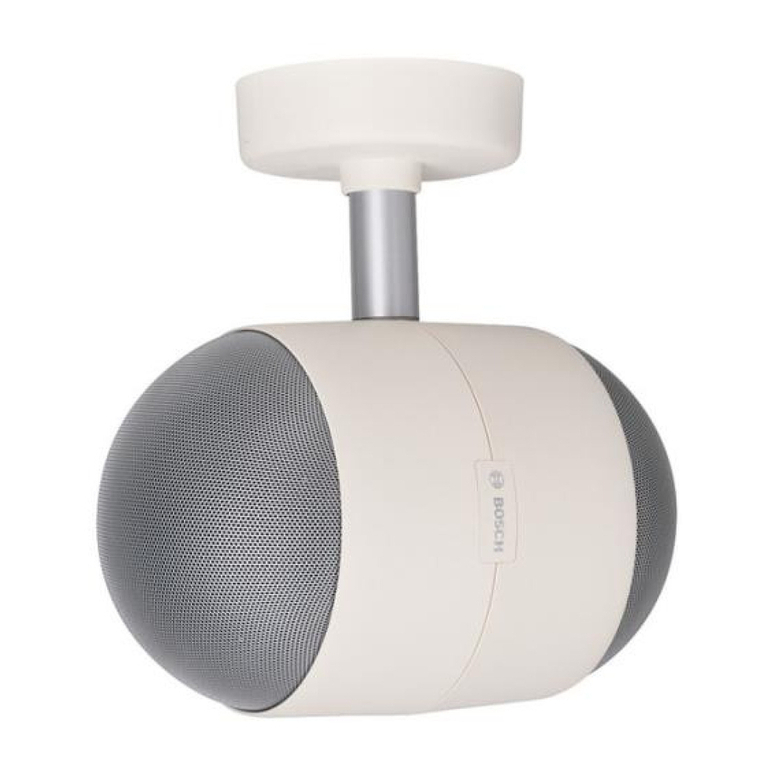
Bosch
Bosch LP1-BC10E-1 Installation and operation manual
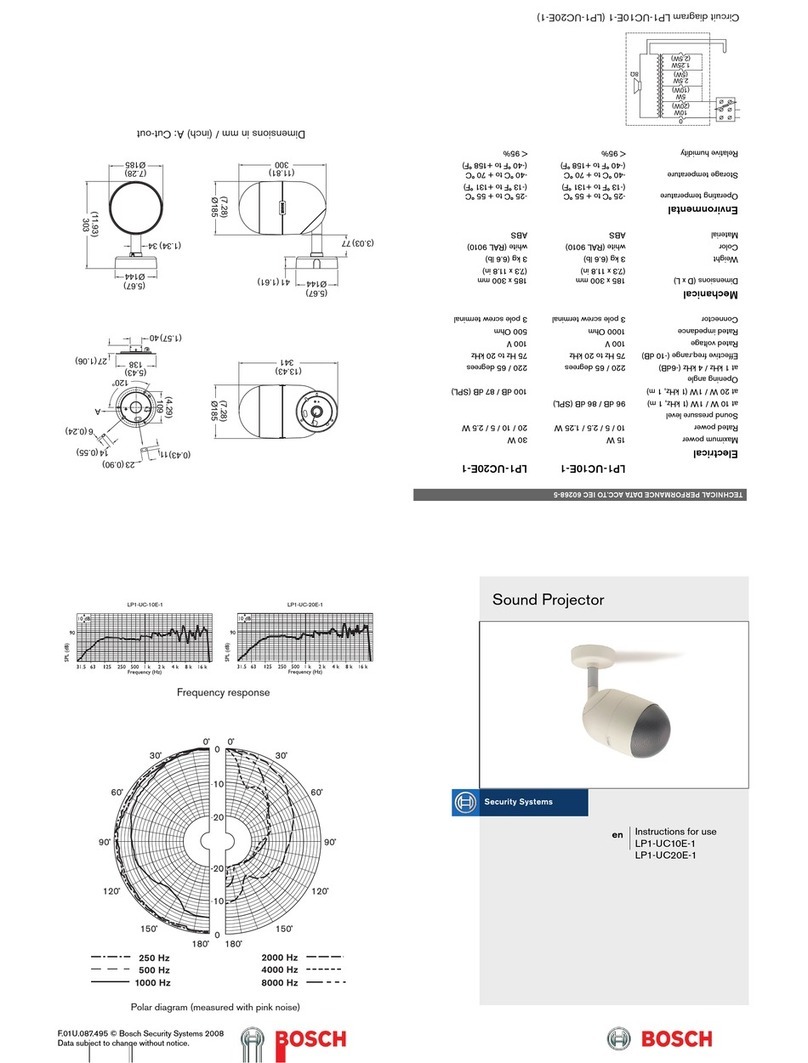
Bosch
Bosch LP1-UC10E-1 User manual

Bosch
Bosch LBC 3430/03 Installation and operation manual

Bosch
Bosch LB6-100S-D User manual

